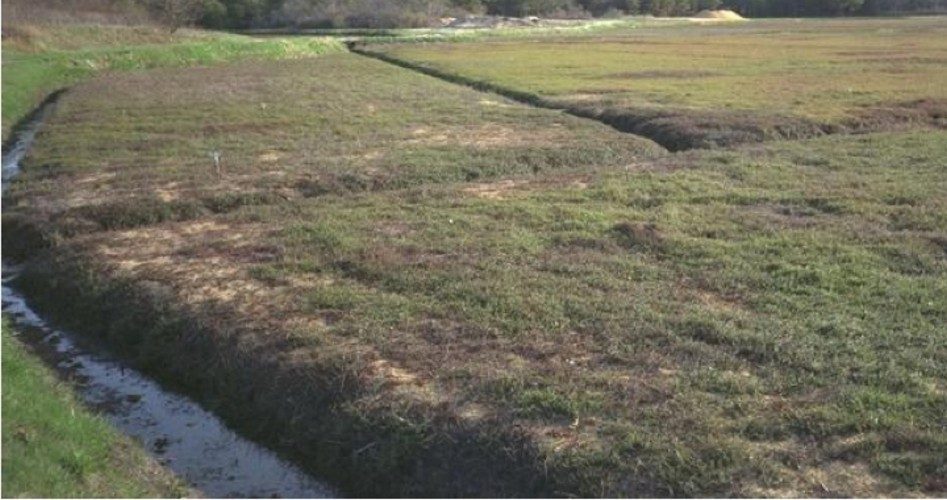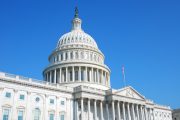
In a White House statement released on May 26, President Obama stated: “I called on the Environmental Protection Agency and the U.S. Army Corps of Engineers to clear up the confusion and uphold our basic duty to protect these vital [water] resources.”
Obama went on the explain that the two federal bodies will provide businesses and industry with the “clarity and certainty” they need to determine which waters are protected by the Clean Water Act, and ensure that polluters “can be held accountable.”
During a “press gaggle” the next day aboard Air Force One, AP’s White House press correspondent Darlene Superville asked Deputy Press Secretary Eric Schultz about the EPA’s new water rules, and, noting that the House has already passed a bill to block those rules from taking effect and that the Senate is considering doing the same thing, asked: “Would the President veto that if it cleared Congress?”
Schultz replied:
Darlene, I’m not going to speculate on legislation that it’s not entirely clear that it will pass. What I can say is that we believe the rule today is a win-win, both for the economy and for public health. This is a rule that will protect streams and wetlands that form the foundation of our nation’s water resources. They feed the rivers, lakes, bays and coastal waters that our health and economy depend on.
When Superville noted that many farmers and business people are complaining about the cost that would be imposed on them by the new rules and was asked, “What cost estimates does the administration have for the financial cost that they would bear?” Schultz replied:
Zero. It’s important to note that this rule has no direct cost to a community, business or individual. It only applies if someone is going to pollute or destroy a body of water and needs a permit. So money and time will actually be saved by all involved because we will not have to deal with long, drawn-out, case-by-case basis for those determinations. Any cost would come from applying for permits and complying with the rule.
A news release posted on the EPA’s website on May 27 reveals some of the areas where the agency will assert its authority.
• “The Clean Water Act protects navigable waterways and their tributaries. The rule says that a tributary must show physical features of flowing water — a bed, bank, and ordinary high water mark — to warrant protection.”
• “The rule protects waters that are next to rivers and lakes and their tributaries because science shows that they impact downstream waters.”
• “The rule protects prairie potholes, Carolina and Delmarva bays, pocosins, western vernal pools in California, and Texas coastal prairie wetlands when they impact downstream waters.”
• “The rule limits protection to ditches that are constructed out of streams or function like streams and can carry pollution downstream.”
The EPA, stated the agency’s administrator, Gina McCarthy, said that the EPA is not really breaking new ground, but is merely “finalizing a clean water rule.” “This rule is about clarification, and in fact, we’re adding exclusions for features like artificial lakes and ponds, water-filled depressions from constructions and grass swales,” McCarthy told reporters on May 27. “This rule will make it easier to identify protected waters and will make those protections consistent with the law as well as the latest peer-reviewed science. This rule is based on science.”
McCarthy’s (and Obama’s) claims to the contrary, many Americans are worried about the EPA’s “clarification” of its own regulations, a policy change that is sure to expand the reach of the often bothersome agency. These constituents have made their voices known to their representatives in Congress and Congress has responded.
House Agriculture Committee Chairman Mike Conaway (R-Texas) warned: “This rule in its current form is a massive overreach of EPA authority.”
On April 13, Representative Bill Shuster (R-Pa.) introduced the Regulatory Integrity Protection Act of 2015 (H.R. 1732) “To preserve existing rights and responsibilities with respect to waters of the United States.” The legislation tells the Secretary of the Army and the Administrator of the EPA to withdraw the proposed (now implemented) rule entitled “Definition of ‘Waters of the United States’ Under the Clean Water Act,” the same rule change just announced by the Obama administration.
Shuster’s bill was supported by the American Farm Bureau Federation. It was passed by the House on May 12 on a 261-155 vote and received in the Senate the next day.
Senator John Barrasso (R-Wyo.), who called the EPA measure “outrageously broad,” sponsored a bill in the Senate to curtail the EPA’s power grab. Called the Federal Water Quality Protection Act (S. 1140), the bill would require the Secretary of the Army and the EPA administrator to propose a regulation revising the definition of the term “waters of the United States.”
Among other things, S. 1140 defends states’ rights by stating that “an exclusion of waters from Federal jurisdiction does not mean that excluded waters will be exempt from regulation and protection, but rather, it recognizes the limits of Federal jurisdiction under the Federal Water Pollution Control Act … and the primary role of States in protecting State waters.”
The bill also lists specific bodies of water that should not be included among the Federal Water Pollution Control Act’s definition, “waters of the United States” such as water that is located below the surface of the land; Isolated ponds, whether natural or manmade, including farm ponds, fish ponds, ornamental ponds, swimming pools; and stormwater or floodwater systems within the boundaries of a State; and municipal and industrial water supplies within the boundaries of a State.
With the Obama administration so intent on increasing the reach of the EPA through the agency’s new water rules, it can be assumed the Obama would veto any legislation that would nullify them. In that case, Congress must pass such legislation by a veto-proof, two-thirds majority, which is 290 votes in the House and 67 in the Senate, if every member casts a vote.



